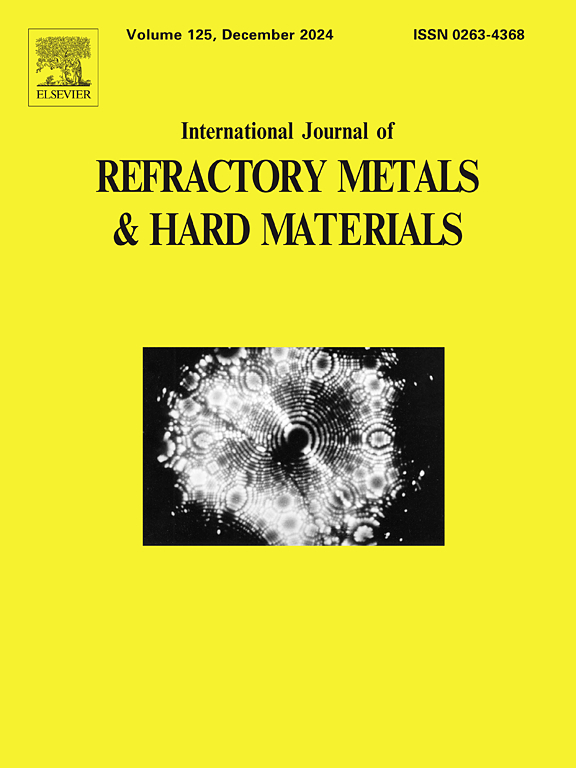梯度WC-co复合材料的制备及其力学性能评价
IF 4.2
2区 材料科学
Q2 MATERIALS SCIENCE, MULTIDISCIPLINARY
International Journal of Refractory Metals & Hard Materials
Pub Date : 2025-04-08
DOI:10.1016/j.ijrmhm.2025.107180
引用次数: 0
摘要
在本研究中,设计并制造了两种具有梯度组织的WC-Co复合材料,其平均钴含量分别为10 wt%和8 wt%。显微组织分析和EDS测试结果证实了WC-Co复合材料中钴含量呈梯度分布。对设计的梯度WC-Co复合材料和钴含量、硬度相近的均匀WC-Co复合材料进行了磨粒耐磨性、断裂韧性、抗弯强度、静态抗压性、抗压疲劳性、抗冲击性等力学性能测试。力学试验结果表明,与均质WC-Co复合材料相比,制备的梯度WC-Co复合材料在磨料耐磨性、静压耐磨性、抗压疲劳性和冲击韧性方面具有显著优势,在断裂韧性和抗弯强度方面也具有相当的性能。研究了梯度WC-Co复合材料的力学性能与微观组织之间的关系,为进一步提高其性能提供了可能。本文章由计算机程序翻译,如有差异,请以英文原文为准。
Manufacture of gradient WC-co composite and its mechanical property evaluation
In this study, two different compositions of WC-Co composite with gradient microstructure are designed and manufactured with the average cobalt content of 10 wt% and 8 wt% individually. Microstructure analysis and EDS test results confirmed the existence of a gradient distribution of cobalt content in the manufactured WC-Co composite. Mechanical properties including abrasive wear resistance, fracture toughness, bending strength, static compressive resistance, compressive fatigue resistance, and impact resistance were all conducted on both designed gradient WC-Co composite and homogenous WC-Co composite with the similar cobalt content and hardness. The mechanical test results demonstrated that the manufactured gradient WC-Co composite exhibited significant advantages in abrasive wear resistance, static compression resistance, compressive fatigue resistance, and impact toughness compared with homogenous WC-Co composite, while showing comparable performance in fracture toughness and bending strength. The relationships between the mechanical properties and microstructure of gradient WC-Co composite were studied for further potential performance improvement.
求助全文
通过发布文献求助,成功后即可免费获取论文全文。
去求助
来源期刊
CiteScore
7.00
自引率
13.90%
发文量
236
审稿时长
35 days
期刊介绍:
The International Journal of Refractory Metals and Hard Materials (IJRMHM) publishes original research articles concerned with all aspects of refractory metals and hard materials. Refractory metals are defined as metals with melting points higher than 1800 °C. These are tungsten, molybdenum, chromium, tantalum, niobium, hafnium, and rhenium, as well as many compounds and alloys based thereupon. Hard materials that are included in the scope of this journal are defined as materials with hardness values higher than 1000 kg/mm2, primarily intended for applications as manufacturing tools or wear resistant components in mechanical systems. Thus they encompass carbides, nitrides and borides of metals, and related compounds. A special focus of this journal is put on the family of hardmetals, which is also known as cemented tungsten carbide, and cermets which are based on titanium carbide and carbonitrides with or without a metal binder. Ceramics and superhard materials including diamond and cubic boron nitride may also be accepted provided the subject material is presented as hard materials as defined above.

 求助内容:
求助内容: 应助结果提醒方式:
应助结果提醒方式:


